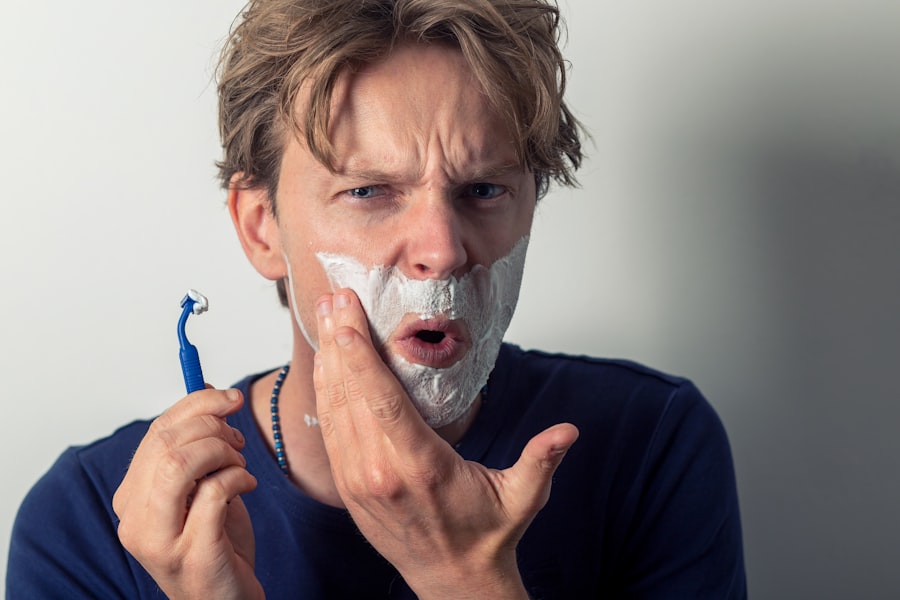When you consider laser hair removal, it’s essential to grasp how the process works. At its core, laser hair removal utilizes concentrated beams of light to target and destroy hair follicles. The pigment in the hair absorbs this light, which generates heat and ultimately damages the follicle, inhibiting future hair growth.
This method is not only effective but also relatively quick, making it a popular choice for those seeking a long-term solution to unwanted hair. As you prepare for your first session, you might wonder about the technology behind it. Different types of lasers are used depending on your skin type and hair color.
For instance, some lasers are more effective on darker hair and lighter skin, while others can accommodate a broader range of skin tones. Understanding these nuances can help you set realistic expectations for your results and ensure that you choose a qualified professional who can tailor the treatment to your specific needs.
Key Takeaways
- Laser hair removal targets hair follicles to reduce hair growth
- Factors affecting shaving frequency include hair type, skin type, and hair growth cycle
- Shaving before laser sessions helps the laser target the hair follicles more effectively
- Shaving frequency after laser sessions may decrease as hair growth slows down
- Tips for maintaining smooth skin between sessions include exfoliation and moisturizing
Factors Affecting Shaving Frequency
Your shaving frequency can be influenced by several factors, including hair growth cycles, skin sensitivity, and personal preferences. Hair grows in cycles, which means that not all hair is in the same growth phase at any given time. This natural cycle can affect how often you feel the need to shave.
For instance, if you have a fast hair growth rate, you may find yourself reaching for the razor more frequently than someone whose hair grows at a slower pace. Additionally, your skin type plays a significant role in determining how often you should shave. If you have sensitive skin, frequent shaving may lead to irritation or razor burn, prompting you to adjust your routine.
On the other hand, if your skin is resilient and can handle regular shaving without adverse effects, you might choose to shave more often. Ultimately, understanding your body’s unique characteristics will help you find a shaving frequency that works best for you.
Shaving Recommendations Before Laser Sessions
Before embarking on your laser hair removal journey, it’s crucial to prepare your skin properly. One of the most important steps is shaving the area to be treated. Ideally, you should shave 24 to 48 hours before your appointment.
This timing allows your skin to recover from any potential irritation caused by shaving while ensuring that the laser can effectively target the hair follicles without interference from longer hair. When shaving before your session, use a clean, sharp razor and a gentle shaving cream or gel to minimize irritation. Avoid using any products that contain harsh chemicals or fragrances, as these can exacerbate sensitivity.
After shaving, it’s wise to avoid sun exposure and refrain from applying any lotions or creams to the area until after your treatment. This preparation will help ensure that your skin is in optimal condition for the laser procedure.
Shaving Frequency After Laser Sessions
| Age Group | Frequency of Shaving |
|---|---|
| 18-25 | Once a week |
| 26-35 | Twice a week |
| 36-45 | Every 3-4 days |
| Above 45 | Every 2-3 days |
After undergoing laser hair removal sessions, you may notice a change in your shaving frequency. Many individuals find that they need to shave less often as the treatments progress and hair growth diminishes. Initially, you might still experience some regrowth between sessions; however, this hair is often finer and lighter than before.
As you continue with your treatments, the need for shaving may decrease significantly. It’s important to listen to your body during this time. If you find that certain areas require more frequent shaving than others, adjust your routine accordingly.
Some people may choose to shave only when necessary, while others might prefer to maintain a regular schedule. Regardless of your approach, remember that patience is key; results can vary from person to person based on individual hair growth patterns and treatment effectiveness.
Tips for Maintaining Smooth Skin Between Sessions
To keep your skin smooth and healthy between laser hair removal sessions, consider adopting a few simple practices. First and foremost, moisturizing regularly can help maintain skin hydration and prevent dryness or irritation. Look for products that are free from harsh chemicals and fragrances to ensure they are gentle on your skin.
Exfoliation is another essential step in maintaining smooth skin. By gently exfoliating once or twice a week, you can remove dead skin cells and prevent ingrown hairs from forming. This practice not only enhances the appearance of your skin but also allows for better absorption of moisturizers and other skincare products.
Additionally, wearing sunscreen is crucial if you’re exposed to sunlight; protecting your skin from UV rays will help prevent pigmentation changes and keep it looking its best.
Common Misconceptions About Shaving and Laser Hair Removal

There are several misconceptions surrounding shaving and laser hair removal that can lead to confusion. One common myth is that shaving makes hair grow back thicker or darker. In reality, shaving only cuts the hair at the surface level; it does not affect the follicle or change the hair’s texture or color.
Understanding this fact can help alleviate any concerns you may have about shaving before your laser sessions.
While many people experience significant reduction in hair growth after just a few sessions, multiple treatments are typically necessary for optimal results.
The number of sessions required varies based on individual factors such as hair type and growth patterns. Being aware of these misconceptions can help you approach your laser hair removal journey with realistic expectations.
Adjusting Shaving Frequency Based on Hair Growth
As you progress through your laser hair removal treatments, it’s essential to remain flexible with your shaving frequency based on how your hair growth changes over time. Initially, you may find that certain areas require more frequent attention as the laser begins to take effect. However, as treatments continue and hair becomes sparser, you might notice that you can extend the time between shaves.
Monitoring your hair growth closely will allow you to make informed decisions about when to shave. If you notice that regrowth is minimal in certain areas, consider reducing the frequency of shaving there while maintaining a regular schedule for other areas that may still require attention. This adaptability will not only save you time but also contribute to maintaining healthy skin throughout your laser hair removal journey.
Consulting with a Professional for Personalized Advice
Finally, one of the best steps you can take when considering laser hair removal is consulting with a qualified professional who specializes in this field. A consultation allows you to discuss your specific needs and concerns while receiving personalized advice tailored to your unique situation. During this meeting, be sure to ask questions about the procedure, expected results, and any pre- or post-treatment care recommendations.
A professional can also help assess your skin type and hair characteristics to determine the most suitable laser technology for you. They can provide insights into how often you should shave before and after sessions based on their expertise and experience with similar cases. By seeking guidance from an expert, you’ll be better equipped to navigate your laser hair removal journey with confidence and achieve the smooth skin you desire.
If you are considering laser hair removal, it is important to know how often you can shave between sessions to ensure the best results. According to a related article on In Laser Hair Removal, it is recommended to avoid shaving for at least 24 hours before your laser treatment to prevent irritation. Additionally, shaving between sessions is typically allowed, but it is important to follow the guidelines provided by your technician to achieve optimal results.
FAQs
What is laser hair removal?
Laser hair removal is a cosmetic procedure that uses a concentrated beam of light (laser) to remove unwanted hair. The laser targets the pigment in the hair follicles, damaging them and inhibiting future hair growth.
How often can you shave between laser sessions?
It is generally recommended to avoid shaving between laser hair removal sessions. However, if shaving is necessary, it is best to wait at least 24-48 hours before and after the treatment to minimize skin irritation.
Why is it recommended to avoid shaving between laser sessions?
Shaving between laser sessions can disrupt the hair growth cycle and interfere with the effectiveness of the treatment. It can also increase the risk of skin irritation and potential side effects.
Can I use other hair removal methods between laser sessions?
It is generally advised to avoid other hair removal methods such as waxing, plucking, or depilatory creams between laser sessions, as these methods can interfere with the hair follicles targeted by the laser.
How many laser sessions are typically needed for effective hair removal?
The number of laser sessions needed for effective hair removal varies depending on individual factors such as hair color, skin type, and the area being treated. On average, most people require 6-8 sessions spaced 4-6 weeks apart for optimal results.





